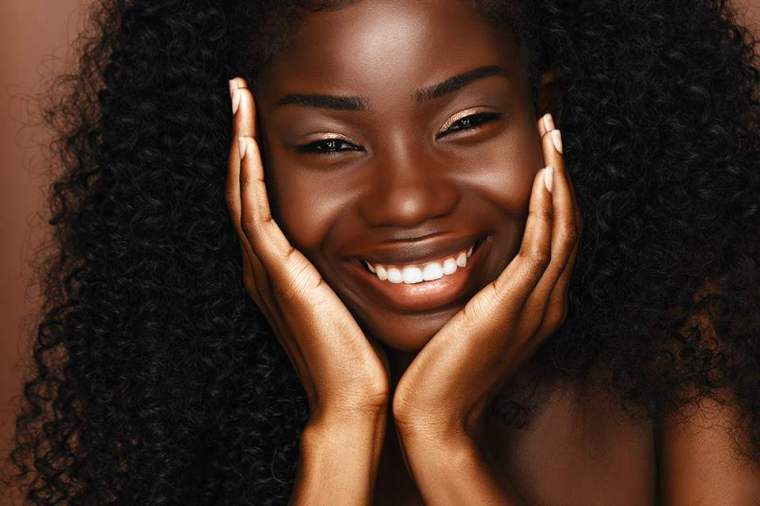
Ethnic Rhinoplasty
Ethnic Rhinoplasty: Preserving Identity with Natural Aesthetic Harmony | Dr. Hakkı Izmirli
Ethnic rhinoplasty is a highly specialized branch of nasal surgery that prioritizes facial identity, cultural features, and natural balance rather than creating a standardized nose shape. Unlike conventional rhinoplasty, where the focus may lean toward reshaping the nose into a possibly “ideal” template, ethnic rhinoplasty respects the patient's heritage, unique proportions, cartilage structure, skin thickness, and ethnic characteristics.
This approach is essential because Asian, African, Middle Eastern, Hispanic, and Mediterranean nasal anatomy differ significantly from Caucasian nasal structures in terms of cartilage strength, tip projection, dorsum height, skin thickness, and nostril shape. The goal of ethnic rhinoplasty is not transformation, but refinement without erasing ethnicity.
What Defines Ethnic Rhinoplasty?
Ethnic rhinoplasty is built on three essential principles:
Preserving ethnic identity
Enhancing natural balance rather than over-reshaping
Strengthening nasal structure with long-lasting, stable results
Rather than reducing or narrowing every nose to a similar shape, the focus is on:
improving symmetry
refining proportions
enhancing nasal tip projection and support
adjusting the nasal base without over-narrowing
maintaining harmony with the eyes, lips, cheeks, and facial framework
Patients choosing ethnic rhinoplasty often want results that make people think:
“You look refreshed — but I can’t tell what changed.”
Asian Rhinoplasty Characteristics (Asian Nose Job / Asian Ethnic Rhinoplasty)
Many patients with East Asian or Southeast Asian nasal features share common anatomical traits:
Low or flat nasal dorsum (bridge)
Under-projected or rounded nasal tip
Shorter nasal length
Wider nostril base
Weaker cartilage structures
Thicker skin over the tip
Surgical goals for Asian rhinoplasty:
✅ Gentle dorsal height augmentation for natural contour
✅ Strong tip support using cartilage grafts for long-term projection
✅ Subtle refinement of the alar base without over-narrowing
✅ Preservation of soft, natural identity rather than creating a “sharp” western nose
Unlike typical reduction-focused rhinoplasty, Asian rhinoplasty often requires structural building rather than removing, making surgical planning more complex. For durable and natural results, septal cartilage, rib cartilage, or ear cartilage grafting may be used strategically.
African Rhinoplasty Characteristics (African Nose Job / Afro-Ethnic Rhinoplasty)
Patients of African descent frequently present with:
Wider nasal base and alar shape
Thicker skin and soft tissue envelope
Lower or less defined nasal tip
Stronger fibrous tissue in the tip
Increased nostril flare
Surgical goals for African rhinoplasty:
✅ Creating natural tip definition and stable projection
✅ Symmetrical reshaping of alar base with subtle narrowing
✅ Supporting tip structure with cartilage grafting
✅ Avoiding loss of ethnic character or exaggerated narrowing
One of the biggest mistakes in non-ethnic rhinoplasty planning is over-reduction of the nostrils or over-sharpening of the tip, which can result in unnatural contrast with the rest of the face. Ethnic rhinoplasty carefully balances refinement with authenticity.
Middle Eastern & Mediterranean Ethnic Rhinoplasty
While nasal features vary widely, common trends include:
Presence of a dorsal hump (bridge bump)
Drooping or heavy nasal tip
Medium to thick skin
Longer nasal length
Strong cartilage structure
Surgical goals:
✅ Gentle hump reduction without collapsing profile strength
✅ Tip rotation and definition while keeping masculine or feminine identity intact
✅ Maintaining facial dominance without looking disharmonious
✅ Breathing function protection or improvement
In many Middle Eastern patients, the objective is not to make the nose small, but to make it harmonious.
Why Ethnic Rhinoplasty Requires a Specialist Approach
Ethnic noses have unique surgical requirements:
Stronger structural support is often needed
Cartilage grafting is frequently required
Thick skin must be managed differently from thin skin
Scar contracture behaves differently
Nostril modification must be minimal and precise
Facial harmony always outweighs trending aesthetics
A one-technique-fits-all rhinoplasty approach leads to:
loss of identity
overly narrow noses
pinched tips
breathing concerns
unnatural appearance
Ethnic rhinoplasty avoids these pitfalls by focusing on individual anatomy and cultural aesthetics.
Recovery & Expected Results
| Timeline | Recovery Stage |
|---|---|
| 1–3 Days | Mild swelling, rest encouraged |
| 5–7 Days | Cast removal, social activities resume |
| 2–6 Weeks | Major swelling decreases |
| 3–6 Months | Tip definition improves |
| 12 Months | Final refined result |
Because many ethnic rhinoplasty cases involve structural grafting, swelling—especially in thicker skin types—can persist longer at the tip. This is normal and part of achieving stable, natural results.
Expected outcomes:
Natural refinement
Improved facial balance
Preserved cultural identity
Strong, supported nasal tip
Better breathing in many cases
No “operated nose look”
Why Choose Dr. Hakkı Izmirli for Ethnic Rhinoplasty?
Specialist in ethnic nasal anatomy
Advanced cartilage grafting expertise
Natural, identity-preserving results
International patient care in Istanbul
Personalized planning, no template noses
Functional + aesthetic precision
Have questions about ethnic rhinoplasty surgery?
Message me directly on WhatsApp



